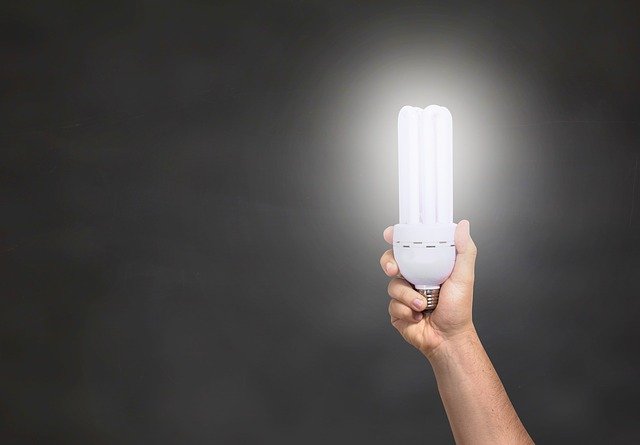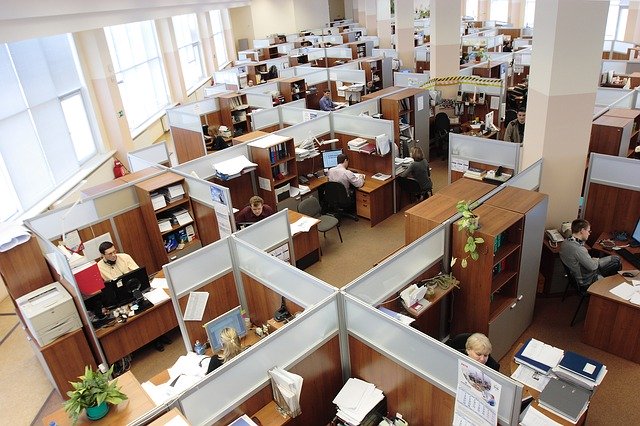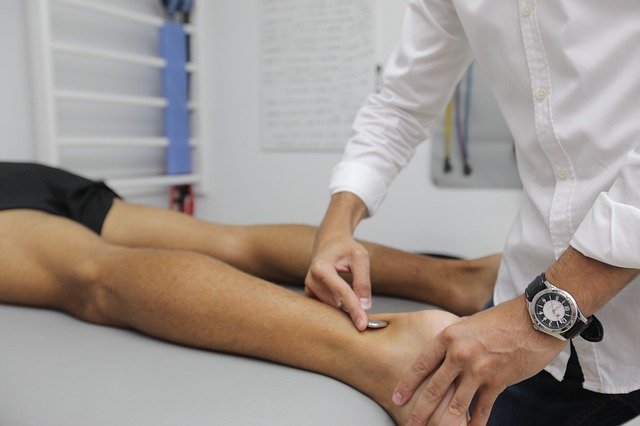Succeeding as a business professional means meeting challenges daily. The experience of pain adds another challenge, making it that much harder for you to meet the demands of the workplace. Unlike deadlines and competition, the challenge of pain in the office is mostly unseen and seldom mentioned. Yet a great number of business professionals struggle with pain, sometimes on a daily basis. Pain in the workplace has a real impact on your personal performance, and on businesses as a whole. According to the American Chronic Pain Association Chronicle, the total cost of pain in businesses adds up to about $294 billion per year in lost productivity and medical expenses.
When you suffer from a painful health condition, such as arthritis or IBS, your symptoms don’t stop when you walk through the office door. That means you’ll need to find ways to manage your discomfort or pain while working. Some forms of pain can actually be caused by office work, such as carpal tunnel syndrome or lower back pain. Among the 20 Hidden Ways Business Professionals Struggle With Pain, we’ll cover forms of pain caused by business tasks, the office environment, office culture, and office work requirements. We’ll also look at the types of pain most commonly affected by each scenario and a few potential solutions that may provide relief.
Pain from Business Tasks
Most of us conquer new problems at work every day, but we do them through the same set of tasks, whether that’s done using email, spreadsheets, or physical documents. And these routine tasks can trigger painful conditions or aggravate existing pain symptoms.
1. Sitting

What could be more comfortable and physically relaxing than having a seat? As it turns out, remaining seated for the majority of the day can actually harm you more than you’d think. A sedentary work mode, with 8 hours or more spent seated at a desk, can lead to a host of painful health problems. As Healthline has reported, sitting at your desk for the majority of the day weakens your glutes and legs, making you more prone to injuries. More concerning, prolonged sitting steadily compresses the spinal discs, which can contribute to their premature degeneration, according to the Canadian Center for Occupational Health and Safety (CCOHS). The CCOHS also reports that sitting reduces blood flow to the muscles of the back and neck, leading to neck pain, shoulder pain and fatigue.
Can cause or worsen: back pain, spinal degeneration
Troubleshoot: standing desk, periodic movement, pilates ball seat, ergonomic chair
2. Standing

If sitting is the problem, standing must be the solution, right? Unfortunately, standing desks are no magic bullet when it comes to pain for business professionals. Many experts believe that the health benefits of sit-stand workstations, while real, are vastly overstated, as reported in the American Journal of Occupational and Environmental Medicine. Standing for long periods, according to the Canadian Center for Occupational Health and Safety, can lead to pain in the feet and ankles, knee pain, swelling of the legs, and other problems caused by reducing blood flow to the loaded muscles of the legs.
Can cause or worsen: foot pain, leg muscle fatigue, varicose veins
Troubleshoot: alternating with sitting, periodic movement
3. Screens

At this very moment, you’re reading on a computer, tablet, or phone. In fact, whether you’re working or on a break, chances are you’re staring at a screen. The power of a traditional desktop computer now fits in our pockets, so we’re in front of a screen more often than ever- and sometimes more often than not. But, as BioMed Central reports, the use of such devises puts stress on our eyes, which can lead to eye fatigue, dryness, eyestrain, and headaches. The so-called “blue light” emitted by screens has also been widely shown to interfere with the body’s circadian rhythms, reducing sleep quality. And poor sleep exacerbates all types of routine pain, from back aches to menstrual cramps.
Can cause or worsen: eyestrain, headaches
Troubleshoot: blue-light blocking “computer glasses,” computer glare screen
4. Typing

It’s pretty amazing that merely tapping a keyboard with your fingertips can have a serious health impact. But because business professionals spend such a large part of the average day typing, these little movements can take a big toll, in the form of repetitive stress injuries (RSI). Tendonitis (inflammation of the tendons) is the most common RSI, according to the Cleveland Clinic. Carpal tunnel syndrome, affecting the hands and wrists, can be especially painful for when typing and mousing, and these tasks can also worsen pain from arthritis of the hands.
Can cause or worsen: carpal tunnel syndrome, tendonitis, arthritis
Troubleshoot: ergonomic keyboard and mouse, keyboard wrist cushion
5. Commuting

Pain for business professionals often starts before they even start their work day. The US Census Bureau reports that the average commute is 26.1 minutes each way, which adds up to over 200 hours per year. Data from the Bureau’s American Community Survey shows that commutes are longer most major metropolitan areas, with those in Washington DC and NYC around double the national average. All that time spent sitting in busses, trains, and (most often) cars, contributes to the same problems as sitting in office chairs; leg weakness, lower back pain, and spinal disc compression. Research conducted at the the Cooper Institute in Dallas and the School of Medicine in St. Louis found that commutes of 20 miles or more are also associated with higher blood sugar and cholesterol.
Can cause or worsen: leg weakness, back pain, spinal disc compression
Troubleshoot: remote work, bike or walk to work
Pain from Office Environments
More people than ever work remotely, but the vast majority of business professionals spend their 9 to 5 in an office building. And while more offices than ever have been designed with the comfort, productivity, and health of employees in mind, the fact remains that these spaces can contribute to pain for business professionals.
6. Lighting

The blue light from your computer isn’t the only problem for photosensitive business professionals. If you suffer from headaches, especially migraines, fluorescent lighting can be a trigger for bouts of discomfort and pain. Another less widely known issue is Irlen syndrome, a perceptual processing disorder that affects 12-14% of people. Business professionals with Irlen Syndrome may find themselves suffering headaches, nausea, and fatigue in response to bright office lights.
Can cause or worsen: migraines, headaches, Irlen SyndromeTroubleshoot: light sensitivity glasses, light shades, dimmers
7. Layout

While some of us enjoy a spacious and sunny corner office, most business professionals work in cubicles or at an open-workspace office. That means contending with some level of sensory input from others, whether it’s visual, auditory, or even olfactory (now that we all seem to eat lunch while working). And all that constant and multidirectional sensory input can up your stress and even trigger headaches. Researchers at Queensland University of Technology found that 90% of business professionals in an open-plan workspace had elevated stress and high blood pressure. Crowding many people’s work stations into a single large room means most of us don’t have a window directly by our desks. This lack of natural light can be another factor in headaches, fatigue, and migraines.
Can cause or worsen: migraines, headaches, fatigueTroubleshoot: broad-spectrum desk lamps, noise-cancelling headphones
8. Temperature

Most office thermostats are set to 68-70 degrees Fahrenheit, with the idea that this temperature is ideal for boosting productivity. And while a brisk, cool environment may help weary workers stay awake, business professionals with pain of all sorts may find their symptoms worsened by the cold office air. Studies have shown that a cold ambient temperature increases perceived pain. This temperature-dependent increase in pain is especially common with pain of the joints, including fibromyalgia and arthritis.
Can cause or worsen: migraines, fibromyalgia, joint pain, muscle painTroubleshoot: thermostat adjustment, dressing in layers, blankets, space heaters
9. Stairs

With some exceptions, office buildings these days are ADA (Americans with Disabilities Act)- compliant, meaning that they should have ramps and elevators so that business professionals who use mobility devices such as wheelchairs or crutches can navigate the space. But a large percentage of workers wound up taking the stairs at some point during their workday, either to quickly traverse a single floor, to get to a train platform on their commute, or to exit their park[ing garage. Except for trips of three or more floors, stairs are usually the fastest way to get up or down within a building for work, but they aren’t the most painless. People with muscle injuries, knee pain, rheumatism, foot problems, and leg pain usually find that stairs exacerbate their pain. Unfortunately for the busy business professional, this forces them to look for slower but safer access via ramps and elevators.
Can cause or worsen: foot pain, joint pain, muscle painTroubleshoot: use ramps and elevators
10. Office Food

Businesses want their employees to be healthy, but most modern offices are about as far from a health club as you can get. A survey conducted by CareerBuilder found that about half of business professionals report gaining weight due to office work. Sedentary working is certainly a factor, but office food is also known to be sub-par in both freshness and health. From donuts in the coffee room to the candy dish at reception, there are unhealthy “perks” available in many offices. And when lunch rolls around, most of us are more likely to much a protein bar at our desk than to bring in a freshly prepared salad from home. Unfortunately, many offices are loaded with sugar, saturated fats, and refined carbs, which are known to promote inflammation. This, in turn, worsens pain for business professionals who have inflammation-related conditions like rheumatoid arthritis, osteoarthritis, and nerve pain.
Can cause or worsen: fibromyalgia, back pain, rheumatoid arthritis, osteoarthritis, neck pain, nerve painTroubleshoot: prepare foods at home that are high in fiber and low in sugar and saturated fat
Pain from Office Culture
The business world has its own rules of conduct and deeply entrenched conventions. Whether you’re talking about neckties or retirement parties, there are a host of expectations and norms related to how you present and conduct yourself in the office. Unfortunately, some of the things that business professionals are widely expected to do, to consume, and to wear can be downright painful to people with certain health conditions.
11. Business Attire

Most businesses expect you to wear business attire, and regardless of whether that’s business casual or business formal, you need to show up each day looking polished. Many of the garments and accessories that go along with this image are fairly uncomfortable, such as neckties and pantyhose, but few would describe them as painful. The problem arises when pain-relieving accessories clash with business attire. Many image-conscious business professionals avoid using compression socks, wrist braces, knee supports, tinted glasses, heating pads, back braces, or other visible pain-reducing items.
Can cause or worsen: tendonitis, back pain, neck pain, arthritis, nerve painTroubleshoot: look for unobtrusive adaptive devises, cover with sweaters, long pants etc.
12. Office Footwear

Many people with pain of the foot, ankle, knee, and leg are advised by their doctors to wear tennis shoes, often along with orthotic supports. Even people with back pain are often told to look for ergonomic footwear to help manage their pain. But sneakers don’t have a place in most business environments, where loafers and pumps are the norm. High heeled shoes are, as The Guardian recently observed, strongly correlated with prestige for female business professionals, where they are perceived to command greater respect than flat shoes. High heels, of course, cause toe compression, muscle pain, and can even lead to arthritis, a high price to pay for looking polished.
Can cause or worsen: back pain, pronation, plantar fasciitis, imbalances, hammertoes, bunions, arthritis, blisters
Troubleshoot: wear flat shoes, find orthopedic inserts that fit dress shoes
13. Travel

Across industries, work-related travel is an integral part of conducting business. Some people travel regularly, and some business professionals only occasionally travel for conferences or trainings. Traveling, especially by air, can be a headache for anyone, but for those with health conditions, it can be a literal pain. Cramped seats with minimal recline can be hard on those with back pain, and even normal air turbulence can be very painful to people with fibromyalgia. Changes in cabin air pressure can also trigger pain in the sinuses and middle ear, and, according to a study funded by the Swiss National Science Foundation, reduced oxygen can create painful intestinal inflammation. Needless to say, business professionals who make long-haul flights or who fly frequently are more likely to suffer from these problems.
Can cause or worsen: middle ear pain, back and neck pain, muscle cramps, fibromyalgia, sinusitisTroubleshoot: earplugs, aisle seats, business class travel
14. Coffee and Alcohol

It’s hard to imagine a business event without cocktails, or a single day in the office without several rounds of coffee. But and alcohol can worsen many painful conditions, and should be treated with caution by business professionals with health conditions. On the one hand, caffeine is a well-established helper in relieving the pain of headaches, and some studies have shown that caffeine can reduce sensitivity to pain in general, such as backaches and joint pain. But many painful conditions are also exacerbated by caffeine, such as gastroesophageal reflux disease (GERD), Crohn’s Disease, colitis, and irritable bowel syndrome (IBS). Like caffeine, alcohol certainly reduces sensitivity to pain in the short term, but its effects on the body can aggravate painful health issues like acid reflux and gastritis. Studies also show that alcohol triggers intestinal inflammation, which is a problem in chronic inflammatory diseases like rheumatoid arthritis.
Can cause or worsen: gastritis, GERD, IBS, cohn’s disease, colitis, arthritisTroubleshoot:abstaining or moderating consumption
15. Events

From conferences to retirement parties, we all get pulled into events, both large and small, that take us away from our normal work routines. For business professionals managing recurring or chronic health conditions, dropping their normal setting and supports can put them at risk for a painful flare-up. If you have lower back pain, for instance, sitting in a conference center seat for 8 hours instead of your usual pilates ball can trigger a bout of backaches. People with migraines may find themselves facing triggers like loud noise or harsh lighting at a work event outside the office. Apart from the new environment, the social demands of events, where presenting and networking are crucial, can be trying. People with conditions like fibromyalgia or rheumatoid arthritis can quickly become exhausted, leaving them more vulnerable to not only fatigue but physical pain. Compounding the problem, there’s considerable pressure to present a professional and positive image at receptions, conferences, and other work events, meaning business professionals suffering from pain need to try to act otherwise.
Can cause or worsen: migraine, headache, back pain, muscle pain, fatigue, GI painTroubleshoot:taking breaks, sitting near an exit, limiting participation
Pain from Business Work
The business world is, by nature, fast-paced, competitive, and challenging. Business professionals choose their careers because they appreciate the rewards of the field and find the work engaging. But there’s no denying that this type of work is demanding. At times, work itself triggers pain, both in healthy individuals and those with an existing health condition.
16. Stress

Stress is a fact of life, and as many of 33% of adults report high stress levels. With the right mindset, periodic stress can be invigorating, as in the lead-up to a major product roll-out. But chronic stress, or high-level stress can quickly take a major health toll, causing all sorts of physical pain. In the short term, stress can cause headaches, migraines, fatigue, and GI upset. Tension also builds up in the body’s muscles due to stress, particularly the jaw, shoulders, and neck, and triggers bouts of TMJ, back pain, and shoulder pain. In the long term, stress can also lead to lasting inflammation, which worsens arthritis, joint pain, fibromyalgia, and nerve pain
Can cause or worsen: migraine, headache, back pain, fatigue, TMJ, nerve painTroubleshoot: mindfulness practice, breaks, biofeedback, exercise, adequate sleep
17. Fast Pace

Business professionals are always on the run. With the rapid pace of innovation and changes in the marketplace, no office can afford to fall behind the competition. That can be energizing but also exhausting, and some business professionals struggle to avoid burnout. But dashing through your day can mean you don’t have time for the self-care your body needs. Preparing healthy meals, exercising, and quality sleep keep inflammation, muscle spasms, and migraines at bay, but are often sacrificed when the pace of work picks up. People who have issues like back pain need to be especially mindful to make daily stretching and strengthening a priority, even then work becomes hectic, so that they can manage their pain. Tech can be your ally in this undertaking, as there are now several excellent apps to help you monitor your symptoms and track your pain management interventions.
Can cause or worsen: migraine, headaches, back pain, muscle pain, fatigueTroubleshoot: time management, schedule self-care, use pain management apps
18. Long Hours

Gone are the days of working nine to five. For most business professionals, 8 am to 8 pm might be more accurate, and these long days can quickly become a (literal) pain. Even if you find that you’re able to keep your stress levels and pace of work in check, simply logging too many hours in the office can create pain in a number of ways. Studies consistently cite lack of time as the reason most people don’t get sufficient exercise, which is one of the best ways to manage pain. A 12-hour workday plus commute also leaves little time for good sleep, healthy meal prep, which contributes to inflammation and worsens the pain of colitis, IBS, and fibromyalgia. And you’re less likely to maintain good posture and ergonomics as you near the end of a long shift, which puts additional strain on your body, and makes muscle cramps and strains more likely.
Can cause or worsen: back pain, neck pain, IBS, fibromyalgiaTroubleshoot: schedule self-care, use pain management apps, take breaks
19. Limited Sick Leave

The average office grants just over a week of paid sick leave. But even if your office has a generous sick leave policy, there’s plenty of pressure (usually unspoken) to show up to work no matter what. In fact, labor statistics show that 20% of business professionals in the US under the age of 45 took zero sick days per year, and about 60% took less than five. It can be especially difficult to call in sick when you have a major deadline or important project and no one to take over if you’re not available. For the same reason, it’s difficult for ambitious business professionals to take time off for doctor’s appointments, tests, imaging, and physical therapy. but skipping m medical care, or “pushing through the pain” at work can take an obvious toll, worsening injuries, muscle pain, nerve pain, GI pain, and back pain.
Can cause or worsen: back pain, neck pain, migraine, nerve pain, injuriesTroubleshoot: schedule self-care, use pain management apps, take breaks
20. Being on Call

The line between work and life is more blurred than ever, and that’s bad news where self-care is concerned. A survey by Workplace Options found that almost 60% of US employees work outside of office hours using their mobile devises. It can be tough to fully disconnect when business developments keep happening around the clock, but time away from work demands is important for preventing painful health problems. Using mobile devises within two hours before bedtime has been shown to disrupt sleep, for instance. And staying in an always-responsive state has been shown to increase susceptibility to stress and sensitivity to pain and discomfort. Hitting “do not disturb” on your phone may be tough, but can make your limited time off more restorative and pain-free.
Can cause or worsen: migraine, headache, neck pain, fatigue, fibromyalgiaTroubleshoot: schedule “unplugged” hours daily, limit out-of-office communications
